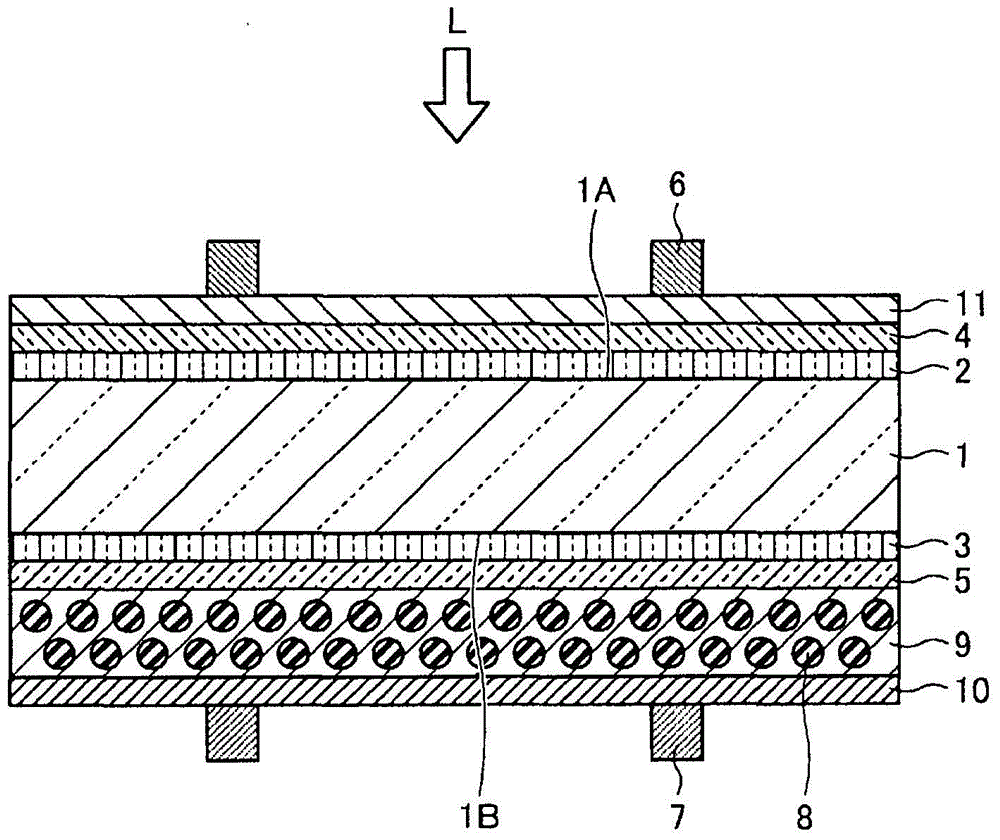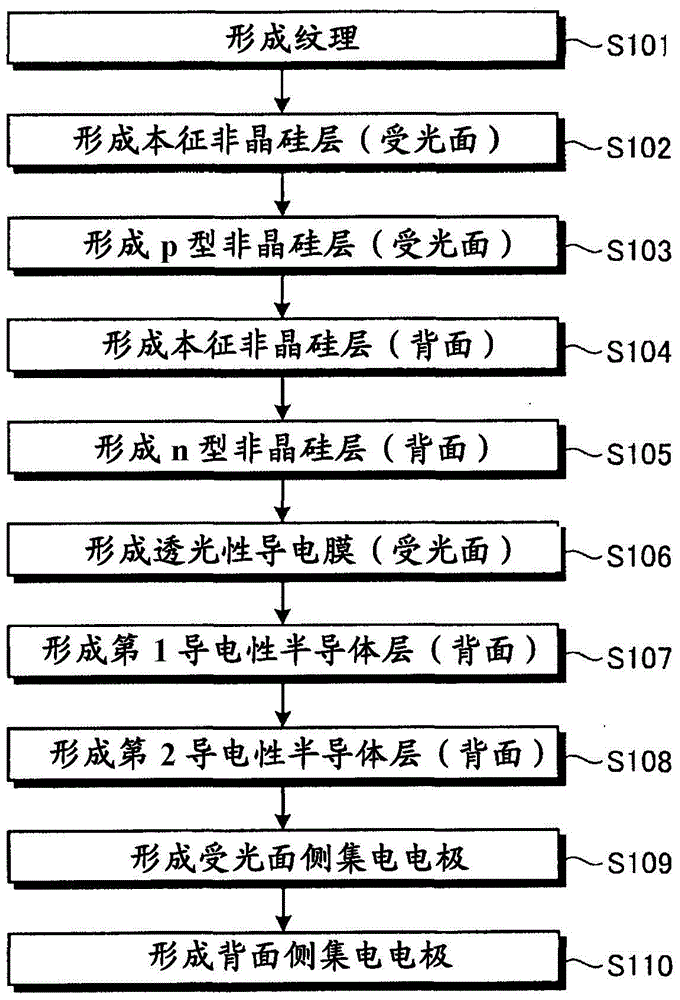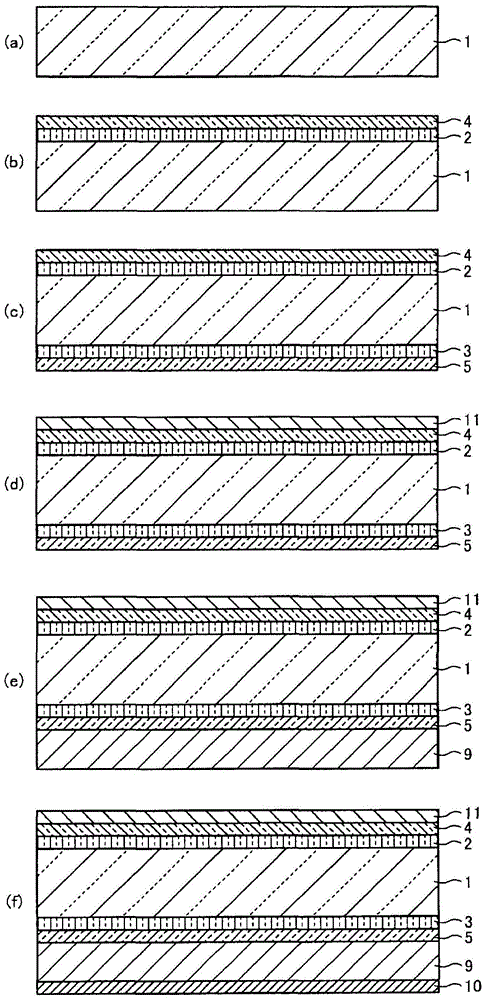Photovoltaic power generation element and manufacturing method thereof
A photovoltaic power generation and component technology, applied in the field of solar cells, can solve the problems of characteristic degradation, increase of internal defects of the crystal, difficulty in ensuring electrical and optical characteristics at the same time, and achieve the effect of series resistance
- Summary
- Abstract
- Description
- Claims
- Application Information
AI Technical Summary
Problems solved by technology
Method used
Image
Examples
Embodiment approach 1
[0035] The photovoltaic power generation element according to Embodiment 1 has a structure in which a crystalline semiconductor substrate of the first conductivity type is used, and an amorphous semiconductor thin film of the second conductivity type different from the semiconductor substrate is provided on the first main surface of the semiconductor substrate. , between the semiconductor substrate and the second conductive type amorphous semiconductor thin film, there is a first amorphous semiconductor thin film that is substantially intrinsic, and on the second main surface of the substrate, there is a first conductive type of the same conductivity type as that of the substrate. The amorphous semiconductor thin film has a substantially intrinsic second amorphous semiconductor thin film between the substrate and the first conductive type amorphous semiconductor thin film, and a transparent semiconductor thin film is provided on the second conductive type amorphous semiconductor...
Embodiment approach 2
[0063] Figure 5 is a cross-sectional view showing the photovoltaic power generation element of Embodiment 2, Figure 6 is a flowchart showing the manufacturing process of the photovoltaic power generation element, Figure 7 is a process sectional view. In Embodiment 1 above, the method of forming the first and second indium oxide layers 9 and 10 by directly coating and firing on the n-type amorphous silicon layer 5 is used, but in this embodiment, the A method of preventing deterioration of the semiconductor layer through the firing process. That is, in this embodiment, it is a photovoltaic power generation element in which a metal substrate 7S is used as a collector electrode on the back side, and the second indium oxide layer 10 and the second indium oxide layer 10 are sequentially formed on the metal substrate 7S. The first indium oxide layer 9 is formed by being directly bonded to the n-type single crystal silicon substrate 1 formed with layers up to the n-type amorpho...
Embodiment approach 3
[0072] Figure 8It is a sectional view showing the structure of the photovoltaic power generation element according to Embodiment 3 of the present invention. The light L used for power generation enters from the side of the translucent conductive film 11 . The photovoltaic power generation element of Embodiment 3 is characterized in that a third conductive semiconductor film is provided between the first conductivity type amorphous semiconductor thin film and the first conductive semiconductor film in the photovoltaic power generation element of Embodiment 1 above, and The carrier concentration of the third conductive semiconductor film is higher than that of the first conductive semiconductor film.
[0073] Here, if Figure 8 As shown, the third conductive semiconductor thin film is the third indium oxide layer 13, and the carrier concentration is 1×10 19 cm -3 Above and 5×10 20 cm -3 In the range below, the thickness is preferably not less than 1 nm and not more than 1...
PUM
 Login to View More
Login to View More Abstract
Description
Claims
Application Information
 Login to View More
Login to View More - R&D
- Intellectual Property
- Life Sciences
- Materials
- Tech Scout
- Unparalleled Data Quality
- Higher Quality Content
- 60% Fewer Hallucinations
Browse by: Latest US Patents, China's latest patents, Technical Efficacy Thesaurus, Application Domain, Technology Topic, Popular Technical Reports.
© 2025 PatSnap. All rights reserved.Legal|Privacy policy|Modern Slavery Act Transparency Statement|Sitemap|About US| Contact US: help@patsnap.com



